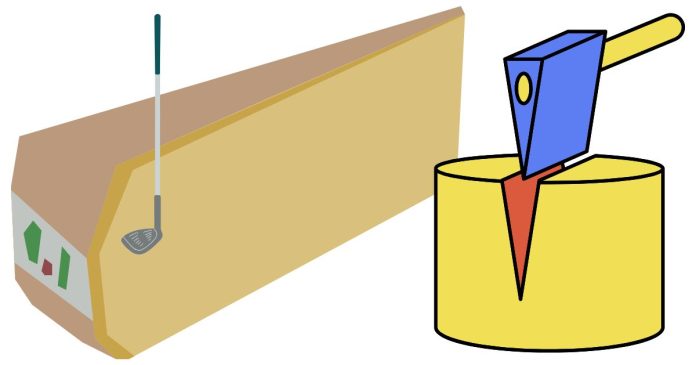What is the Function of the Wedge?
A wedge is a simple yet powerful tool in physics and engineering. It is a type of inclined plane with a sharp edge designed to split, cut, or lift objects. The function of a wedge is based on its ability to convert force applied to it into a force that can accomplish work, such as splitting materials or creating separations between objects.
Key Functions of the Wedge
- Force Amplification
- When a wedge is driven into an object, the force applied at the blunt end is distributed across the narrow tip, allowing the wedge to concentrate the force and amplify its effect. This makes it easier to split or lift heavy objects.
For example, when a wedge is used to split wood, the force you apply to the wide end is concentrated at the sharp edge, making it easier to cut through the fibers of the wood.
- Separation or Cutting
- The primary function of a wedge is to split or divide materials. It is commonly used in tools like knives, axes, chisels, and shovels. The sharp edge of the wedge is driven into a material, causing it to break apart along the direction of the force.
- Examples:
- Axes: A wedge-shaped blade is used to split logs of wood.
- Knives: A wedge is used to cut through food or other materials, where the sharp edge breaks down the material into smaller pieces.
- Lifting Objects
- In some cases, wedges are used to lift or move heavy objects. The inclined plane of the wedge allows a small input force to be translated into a larger lifting force, making it possible to lift objects that would otherwise be difficult to move.
- Example:
- Car Jacks: Some jacks use a wedge-shaped mechanism to lift vehicles by applying force to the narrow end of the wedge, raising the vehicle.
- Stabilizing and Wedge Locks
- Wedges can also be used to lock or stabilize items in place. By forcing a wedge into a gap, friction and pressure hold objects securely.
- Example:
- Wedge Anchors: Used in construction and mechanical applications, a wedge anchor fits into a hole and, as force is applied, it expands to hold the object firmly in place.
The Science Behind the Wedge
The wedge functions based on the principle of an inclined plane, which allows a force to be applied at a smaller, more manageable angle. The sharp edge of the wedge creates pressure on the material it is being driven into, often resulting in the material separating or lifting. The amount of force needed depends on the angle and sharpness of the wedge, as well as the material being worked with.


